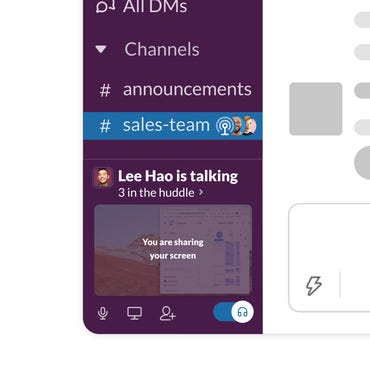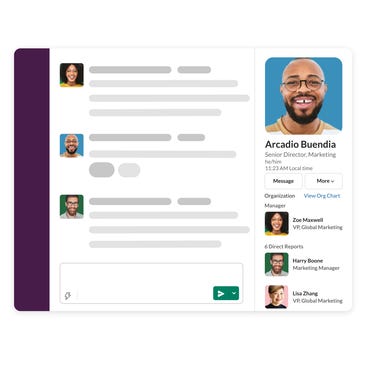Slack wants to put an end to nonstop meetings and Zoom calls | ZDNet
When the Covid-19 pandemic began, work abruptly moved to the digital sphere, and Zoom became a go-to tool for meetings and collaboration. Months later, it’s clear the shift to digital productivity is here to stay, but “Zoom fatigue” has set in.
With that in mind, Slack on Wednesday unveiled a series of new tools designed to put an end to nonstop meetings and videoconferences.
“Endless nine-to-five meetings are inefficient and, frankly, exhausting,” Slack Chief Product Officer Tamar Yehoshua said in a virtual presentation this week. “We need a digital-first approach to collaboration… with Slack as your virtual headquarters.”
The new features include Slack’s own new video tools, a new “Huddles” tool for more ad hoc collaboration and a new form of workplace directory called Slack Atlas. The features, Yehoshua said, were built with the mindset that a virtual headquarters should bring “the same level of intention we had in designing our physical headquarters.”
The new Huddles feature is a new, lightweight, audio-first way of communicating in Slack. Users can start a huddle from the left navigation bar and join a huddle from within a Slack channel. The idea is to make it quicker and easier than scheduling a video or phone call, allowing for more spontaneous and ad hoc collaboration. Unlike a phone call, when you call and wait for someone to pick up, a user can start a huddle and let others come and go as they please.
Slack

“It’s like tapping somebody on the shoulder when you see them working at their desk, or a casual hallway conversation,” Yehoshua said. “It’s also a great way for working teams to quickly swarm on a particular task.”
In more specific examples, a user could start a Huddle to hold team office hours, an HR benefits administrator could open a Huddle during open enrollment, or a marketing team could open a Huddle during a new website launch.
Users can share a screen while in a huddle, and it offers live captions for accessibility. Currently, as many as 50 people can join a Huddle at once. Slack has been piloting this with more than 100 customers, including Expedia Tibco and Dell. Starting Wednesday, Slack is rolling it out to paying teams.
Slack is also introducing a new way to create and playback video, voice and screen recordings natively in Slack. Team members can record and upload short clips into a channel or DM, allowing others to watch and respond when they want.
“We know that just moving our in person meetings to video isn’t working,” Yehoshua said. “We believe that by giving people a way to expressively and asynchronously share and consume information, we can enable people to be more flexible in how they work, and reduce the need for video meetings.”
A manager could, for instance, upload a video to a team Slack channel on Monday mornings in lieu of a weekly meeting. Team members in different time zones could watch the video at a time convenient for them and leave comments in the channel. Users can watch live captions or search transcripts. Since voice and video recordings are automatically transcribed, users can also find them via search. These capabilities are in pilot with customers and will launch to paying teams over the coming months.

Slack
Lastly, Slack is introducing Slack Atlas, a new enterprise directory. Following Slack’s 2020 acquisition of Rimeto, the company is fully integrating Rimeto as Slack Atlas. The tool allows you to find information about people, including org charts and expertise, to provide a holistic view of everyone in the organization. It pulls information from multiple internal sources, making the information accessible just by clicking on a person’s name. Slack Atlas is currently being offered to a select set of
and will be offered more broadly later this year.
For all the latest Technology News Click Here
For the latest news and updates, follow us on Google News.
